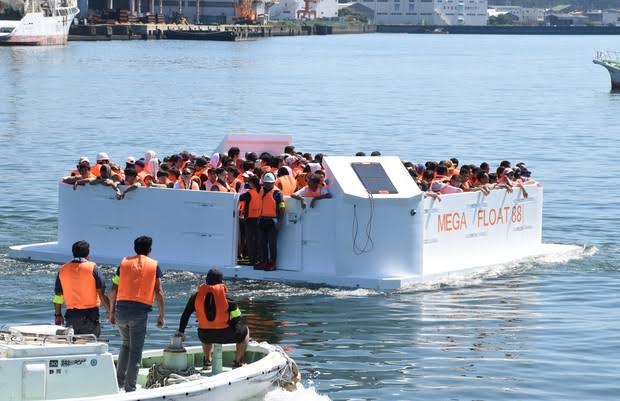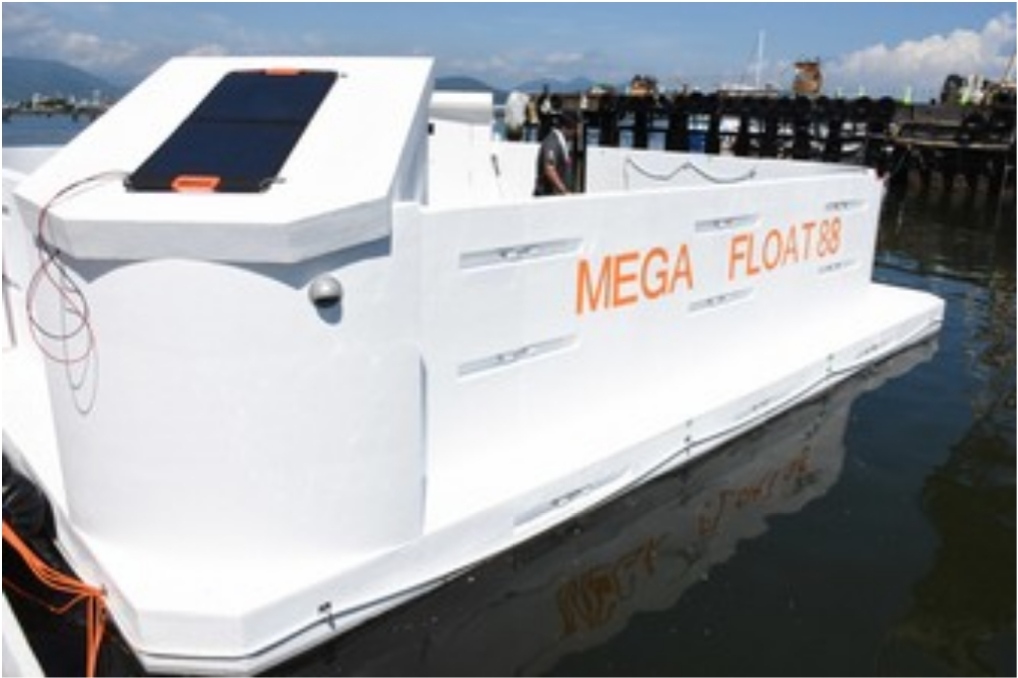Successful test of floating tsunami shelter completed by Japan

The floating tsunami shelter Mega Float 88 is tested with 131 passengers in Shimizu Ward, Shizuoka, Japan on Sept. 18, 2024
A floating tsunami shelter carrying 131 people has been successfully tested in a bay here, with its maker now looking to commercialize the invention.
The Sept. 18 public test saw local stakeholders including disaster prevention researchers board the Mega Float 88 to be towed around Orido Bay in the city of Shizuoka. The floating shelter remained stable throughout the testing period.
The Mega Float 88 was built by Onoda Sangyo, a construction and real estate company based in Shizuoka’s Shimizu Ward, and it is not the firm’s first floating tsunami shelter. It had already made and sold about 40 smaller versions designed for eight or 14 people for seaside companies, individuals, and kindergartens across the country.

The roof of the toilet (foreground, left) is equipped with solar panels to ensure the Mega Float 88 has an emergency power supply, as seen on Sept. 18, 2024
The large shelter was developed in collaboration with Tokai University and the Shizuoka Institute of Science and Technology. The entire structure is made of plastic foam, with a base plate measuring about 8 meters on each side and 30 centimetres thick. The Mega Float also has two toilets and external walls measuring 130 cm high and 15 cm thick. The materials are coated with special resin used for military and other purposes, which enhances impact and abrasion resistance. The expected sales price is around 24 million yen (about $167,00), making it cheaper than tsunami evacuation towers, which cost hundreds of millions of yen to construct.
According to the company, the shelter is designed to be placed in parks or open spaces during regular times, and in the event of an emergency, residents can take refuge on it. Depending on the state of the tsunami, the shelter can either float while anchored or drift along with debris to avoid being destroyed or capsizing.
This was the first time the shelter had carried a large number of people. All participants wore life jackets and they checked the shelter’s stability and waterproofing during their ride. Test participant Hiroshi Asanuma, professor emeritus at Chiba University and the shelter’s development adviser, said, “Living by the sea is attractive, but there is always the fear of tsunamis. To continue living in such areas, it’s important to have shelters like this nearby. I hope municipalities will take an interest.”



